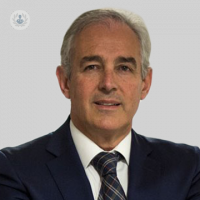Presbyopia: definition, prevention and treatment
Written by:In the following article, the prestigious ophthalmologist, Dr. Carlos Vergés Roger explains the treatment of presbyopia.
What is presbyopia?
Presbyopia is the loss of the ability to focus on near objects. Our visual system has mechanisms that allow us to maintain the focus of the objects from a distant position to a close position and vice versa; is what we call "accommodation". This situation is due to the action of a muscle-tendinous system (ciliary muscle and zonule) that act on the natural lens of the eye, the crystalline lens, which modifies its power and allows the focusing of objects.
This mechanism of focus is lost progressively with age, usually from 40-45 years and is what we call presbyopia .
What symptoms occur to the patient?
The main symptom is the loss of focus of objects near. This signal becomes more evident in poorly lit spaces or when we are more fatigued, it can even affect distant vision, especially when it begins to manifest.

How can it be diagnosed?
Usually the patient usually goes to the ophthalmologist because he has difficulty visualizing nearby objects, located at 30 - 50 cm. At the moment in which this visual change occurs, then it is when we perform a series of scans to assess the degree of alteration in the accommodation, basically the visual acuity is measured , in standard conditions and decreasing the sensitivity to contrast.
To objectively assess the loss of accommodation, we have new systems that allow us to measure the accommodative capacity, by optical interferometry or by dynamic aberrometry , very useful to decide the ideal method for each patient.
What treatments can be carried out to recover the correct functioning of the lens?
The recovery of accommodative capacity, especially of the lens , is very limited, in fact it is produced by the sclerosis (aging) of its tissues and although there are mechanisms that allow to delay its evolution, it is not known how to definitively stop aging.. Currently, a series of exercises (Visual Therapy) aimed at maintaining the elasticity of the lens as well as the functionalism of the muscles and ligaments that allow accommodation, but always in a limited way, can be performed.
For a more definitive and lasting treatment we have other systems such as: the molding of the cornea with laser, the implant of lenses inside the cornea (inlays), the implant of intraocular lenses or, more recently, the implantation of scleral devices, which They have the advantage of not being an intraocular surgery and do not alter the visual axis, thus reducing the risk of complications.
Can anyone operate?
To know if a person is a candidate for surgery is necessary to perform a series of tests, not so much to know if you can operate, but to decide what is the best option for that person. In general, we can say that almost 90% of the population could be intervened, provided that a correct diagnosis is made and the appropriate treatment is applied, with the precise technology and with an experienced surgeon.
If it is not corrected, can it lead to complications?
No, the truth is that presbyopia can continue to be treated with classic glasses. The disadvantage is that it will depend on a "prosthesis" with the limitations that entails for activities such as sports, swimming pool, etc.
Is there any way to prevent presbyopia?
We have already said that presbyopia was the aging process of the eye. This is something that we can not stop completely, but we can delay and minimize it. For this it is advisable to limit the action of ultraviolet radiation and the sun, by: glasses with filters, the diet rich in omega 3 and low in omega 6, performing exercises at home to stimulate accommodation and, fundamentally, exercise Visual Therapy specific for each case. Our experience with this type of therapies allows us to prevent the advance of presbyopia.


